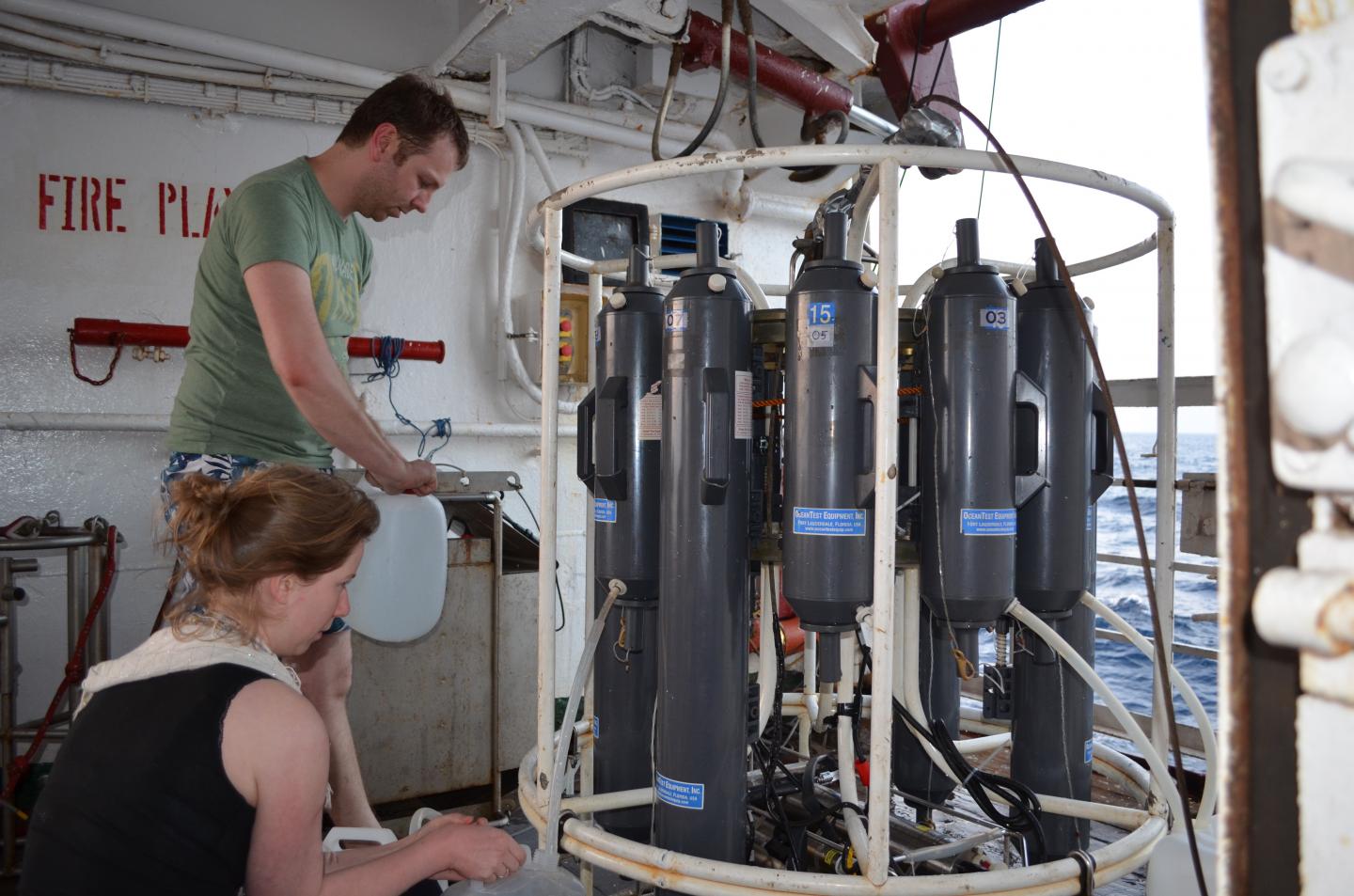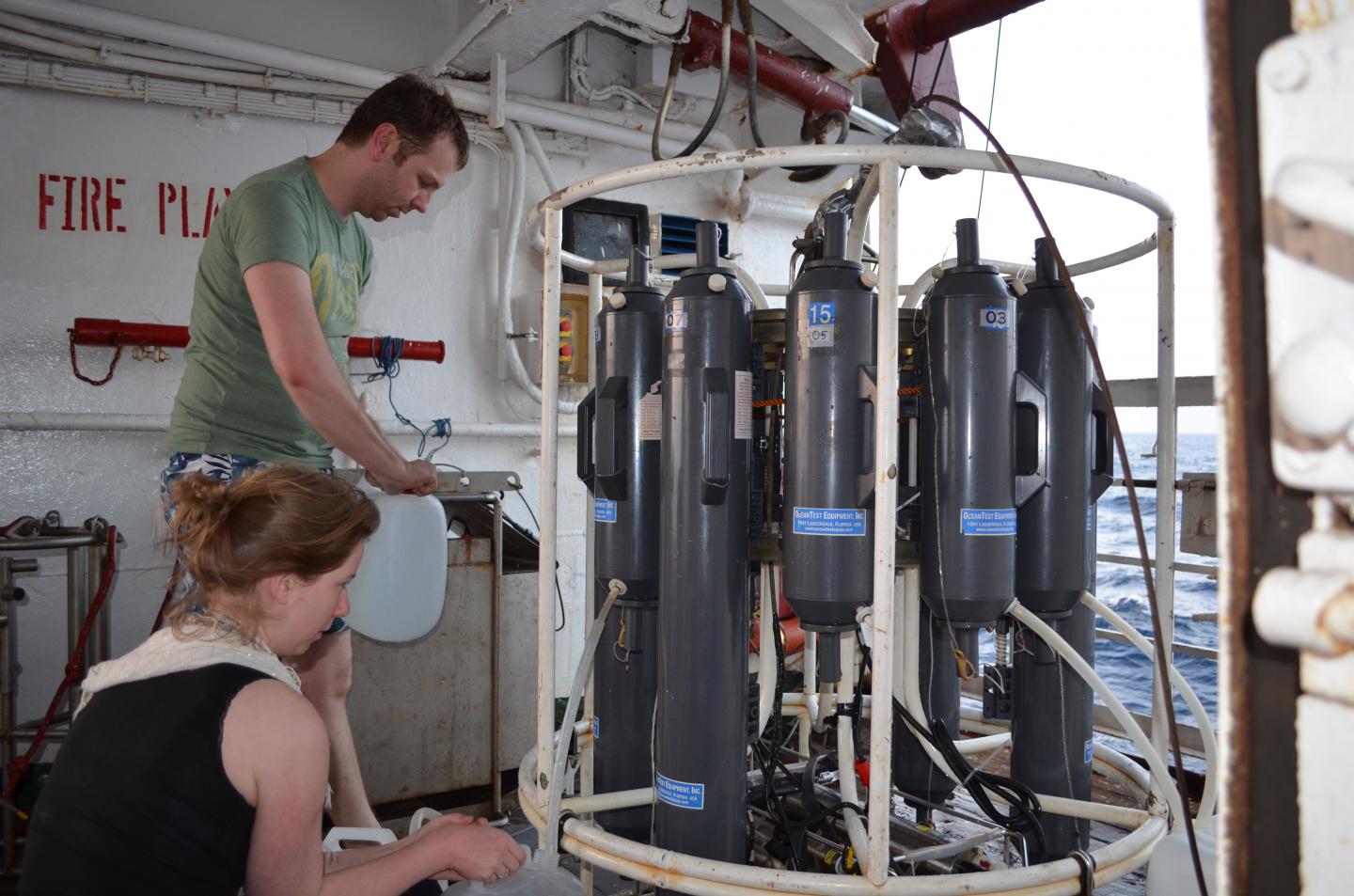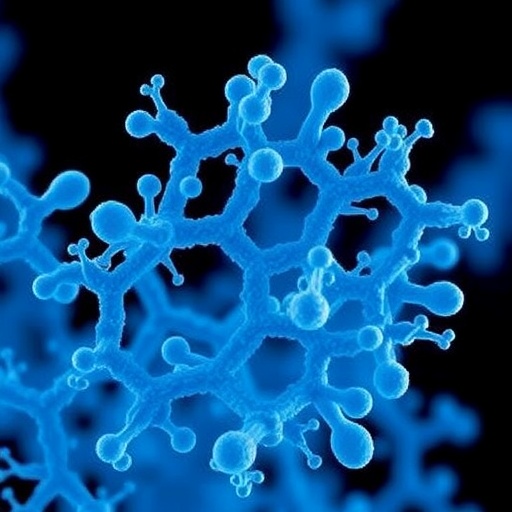
Credit: SDU
Large areas of the global ocean, so called marine "dead zones" contain no oxygen and support microbial processes that remove vast amounts of nitrogen from the global ocean. Nitrogen is a key nutrient for life.
These dead zones are well known off the western coasts of North and South America, off the coast of Namibia and off the west coast of India in the Arabian Sea.
New research published in the journal Nature Geoscience shows that the Bay of Bengal, located in the northeastern Indian Ocean, also hosts a "dead zone" of an estimated 60,000 km2 and occupying water depths of between 100 and 400 meters.
An enigma
This research was conducted as cooperation between the University of Southern Denmark (SDU), the Max Planck Institute (MPI) for Marine Microbiology in Bremen and the National Institute of Oceanography (NIO) of India.
Lead author of the study Laura Bristow, a former postdoc at SDU and now a scientist at the MPI explains "the Bay of Bengal has long stood as an enigma because standard techniques suggest no oxygen in the waters, but, despite this, there has been no indication of nitrogen loss as in other 'dead zones' of the global ocean".
Using newly developed oxygen-sensing technology, the researchers demonstrated that some oxygen does exist in the Bay of Bengal waters, but at concentrations much less than standard techniques could detect and some 10,000 times less than found in the air-saturated surface waters.
Major global player
The researchers also discovered that the Bay of Bengal hosts microbial communities that can remove nitrogen, as in other well-known "dead zones" and even some evidence that they do remove nitrogen, but at really slow rates.
Bristow continues "we have this crazy situation in the Bay of Bengal where the microbes are poised and ready to remove lots more nitrogen than they do, but the trace amounts of oxygen keep them from doing so".
Wajih Naqvi, former director of NIO, and a co-author of the study, adds "remove the last amounts of oxygen, and the Bay of Bengal could become a major global player in nitrogen removal from the oceans".
Population pressure
Removing more nitrogen from the oceans could affect the marine nitrogen balance and rates of marine productivity.
Globally, warming of the atmosphere through climate change is predicted to lead to an expansion of "dead zones" in the global ocean. It is currently unclear whether climate change would lead to the removal of these last traces of oxygen from the Bay of Bengal waters. However, the Bay of Bengal is also surrounded by a heavy population density, and expected increases in fertilizer input to the Bay may increase its productivity, contributing to oxygen depletion at depth.
Bristow warns "Time will tell, but the Bay of Bengal is at a "tipping point", and we currently need models to illuminate how human activities will impact the nitrogen cycle in the Bay of Bengal, and also globally".
###
Media Contact
Birgitte Svennevig
[email protected]
45-27-59-86-79
@@NATsdu
http://www.sdu.dk/en/om_sdu/fakulteterne/naturvide
############
Story Source: Materials provided by Scienmag





